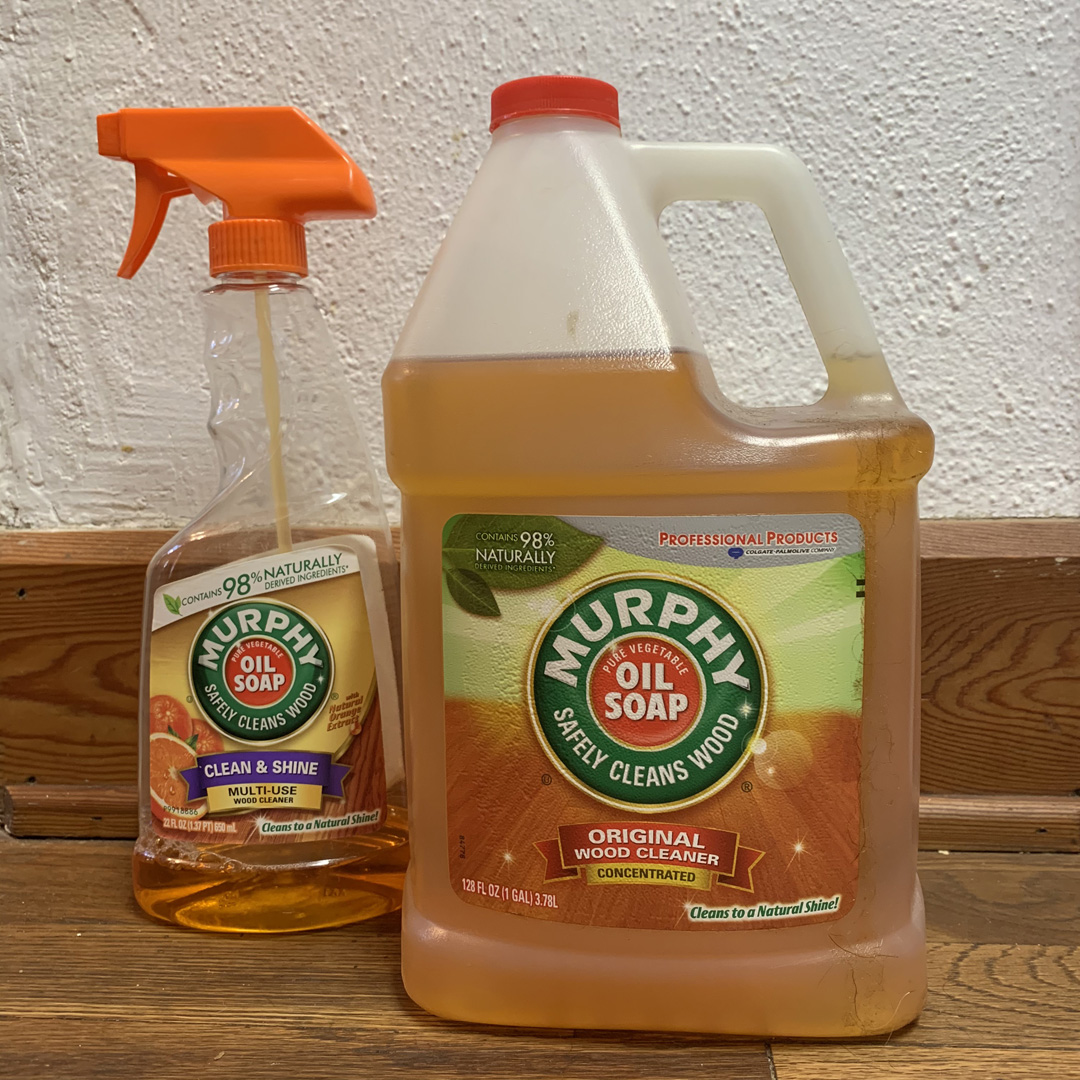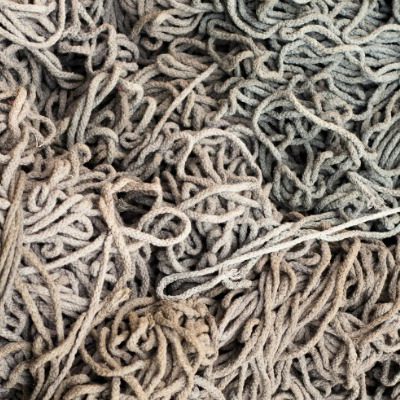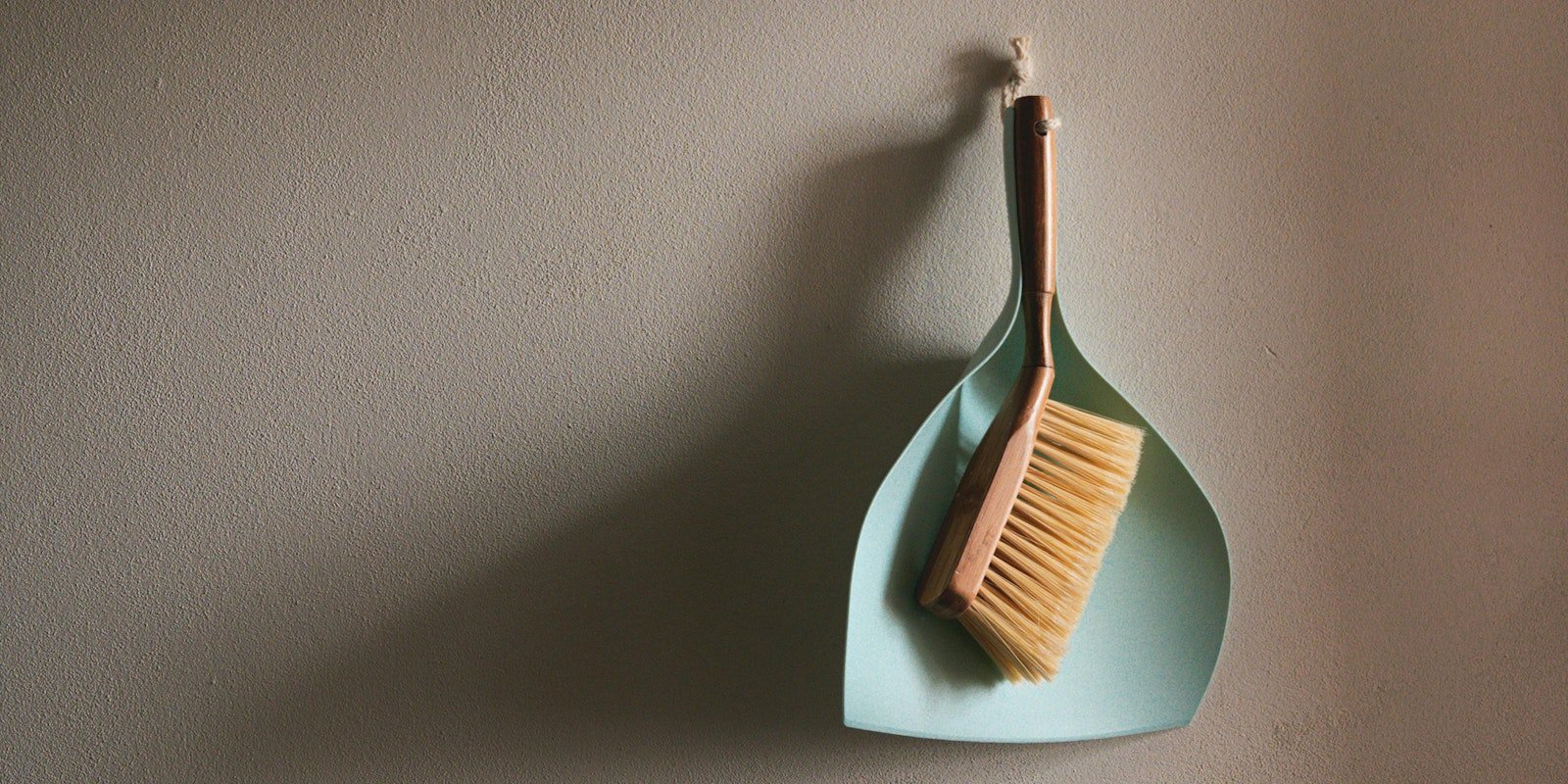I’ll confess that I’m never eager to waste good weaving time on tidying my studio space. On the other hand, I like being able to put my hands right on a particular book or cone of yarn, and I’d rather not work on equipment that’s coated with lint from my latest run of dish towels.
So after I finish each warp I do some dusting, set the robot vac free to roam, and make the rounds with my socket wrench to tighten all the nuts that have worked themselves loose. I keep my label maker handy for shelves, storage boxes and bins, and I put things away where they belong (why is that so hard to do?).
I’ve recently found some other suggestions on the Handwoven website for keeping my space clean and organized—and free of extra stuff. Here are four of them.
Cleaning Your Loom
Liz Moncrief writes about how to take care of dirt and germs:

To clean all looms, regardless of finish, use oil soap on everything that is touchable. Old looms have likely been handled by a lot of weavers. Dogs, cats, and bugs have chewed on the wood. Dare I even mention children?
Whether your loom is oiled, waxed, or varnished, use Murphy Oil Soap or another good-quality oil soap. The point is that you want something with an oil base, not a detergent base. If you have cracks or splits in the wood, you’ll be fine with an oil-based soap.
Editing Your Stash
Christina Garton writes about banishing both cones of shame and the tools she avoids using:

When I look at my collection of 8/2 cotton—all arranged by color of the rainbow—I am filled with joy. When I look at the giant cones of extra-thick, navy-blue and mustard yellow cotton that I have had for 7 years without weaving even once, I feel guilt. So, I will take them to the thrift store, where they can find a new home with somebody who will find joy in what they have to offer.
I suggest you approach your stash the same way—look at your yarns, individually or in groupings, and figure out what you really love and what you’ve kept due to some unknown obligation.
Plan for the Future
Laura Fry writes about S.A.B.L.E., and how to think ahead:
Yarn, looms, and other weaving equipment are not cheap, and it’s never too early to think about what you would like to have happen to your studio contents. You can include bequests in your will, but it is a good idea to check with the recipient to make sure that they can accept such a gift. They may be trying to downsize, they may be allergic to that lovely wool you were thinking they would love, or they might not have room for what you are giving them.
Here are some things to think about when it comes to stash. Mostly it comes down to communicating and writing your wishes down.
Consider Storage Ideas—or a Bulldozer
Tongue firmly in cheek, Linda Ligon writes about all the ways you might organize your weaving supplies:

You can organize your yarn by color, which can be very pretty, or by fiber, or by grist, or by what kind of thing you planned to make out of it when you first purchased it, if you can remember. You can organize it by quantity (enough to make a blanket vs. enough to make a warp for a small towel). You can even sort according to how much weaving time might be required of any given lot and thus integrate your yarn management into a larger time management program, if you're so inclined. Or organize it by how each yarn unit is organized: put all the spools together, and all the cones, and perhaps hang all the skeins in artistic bundles.

